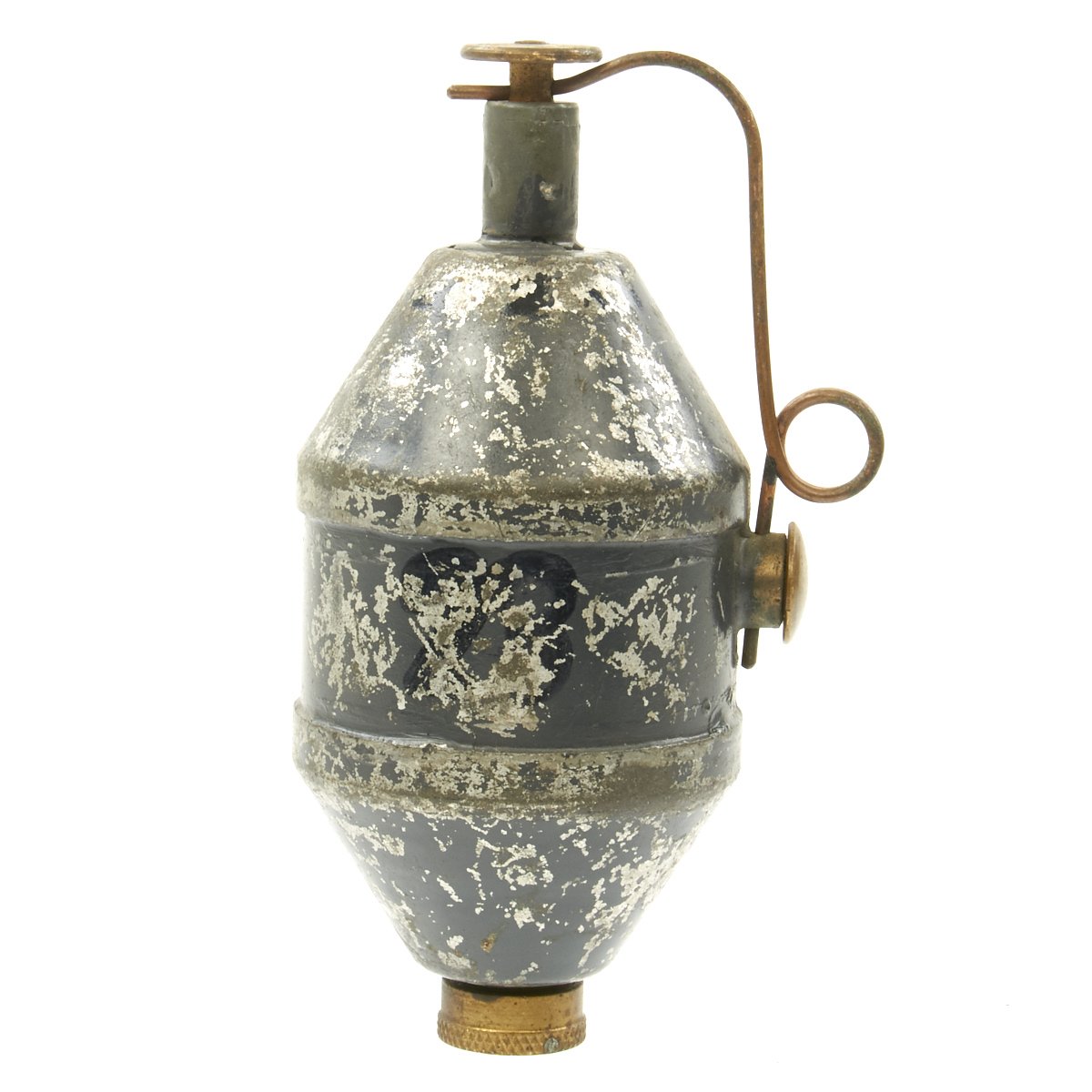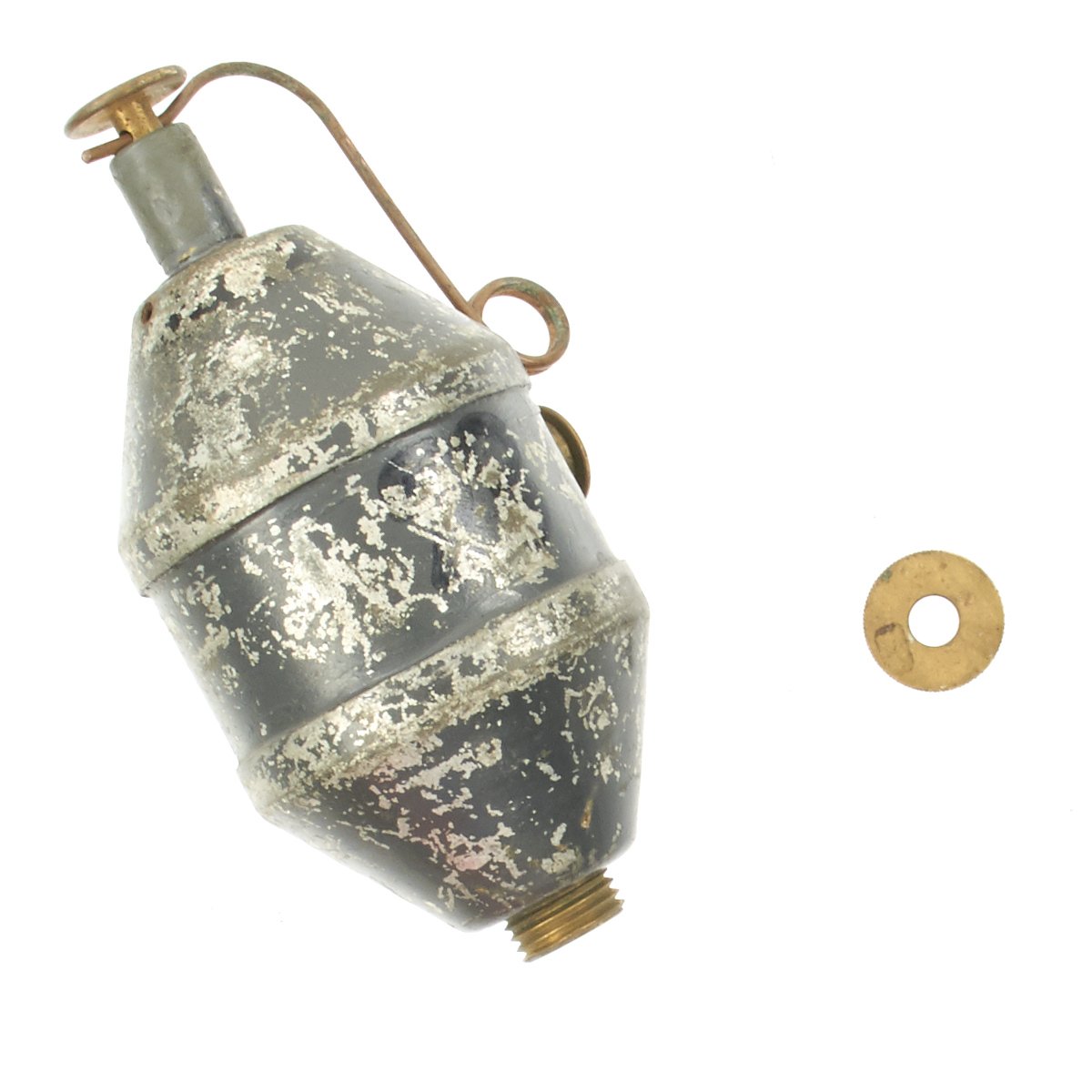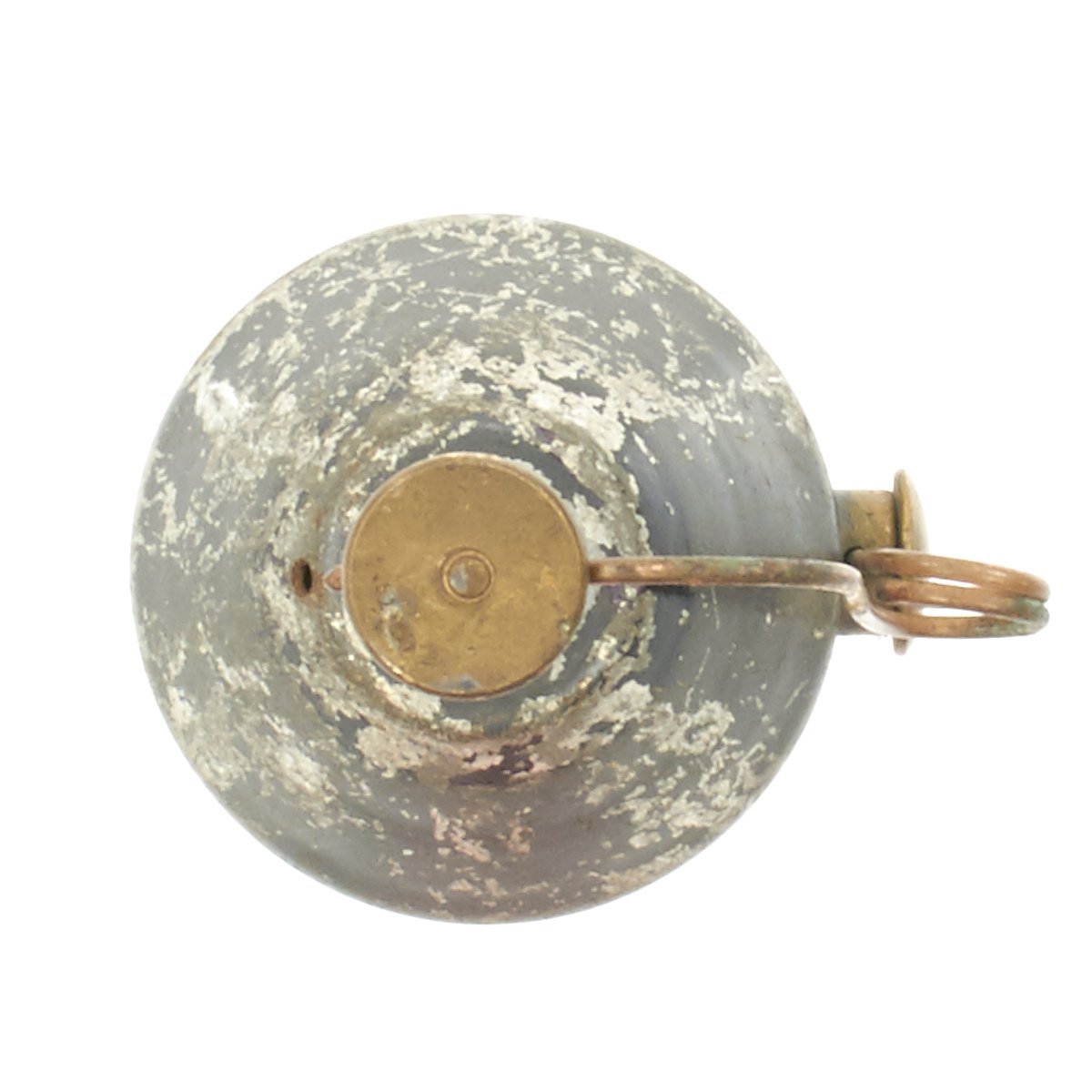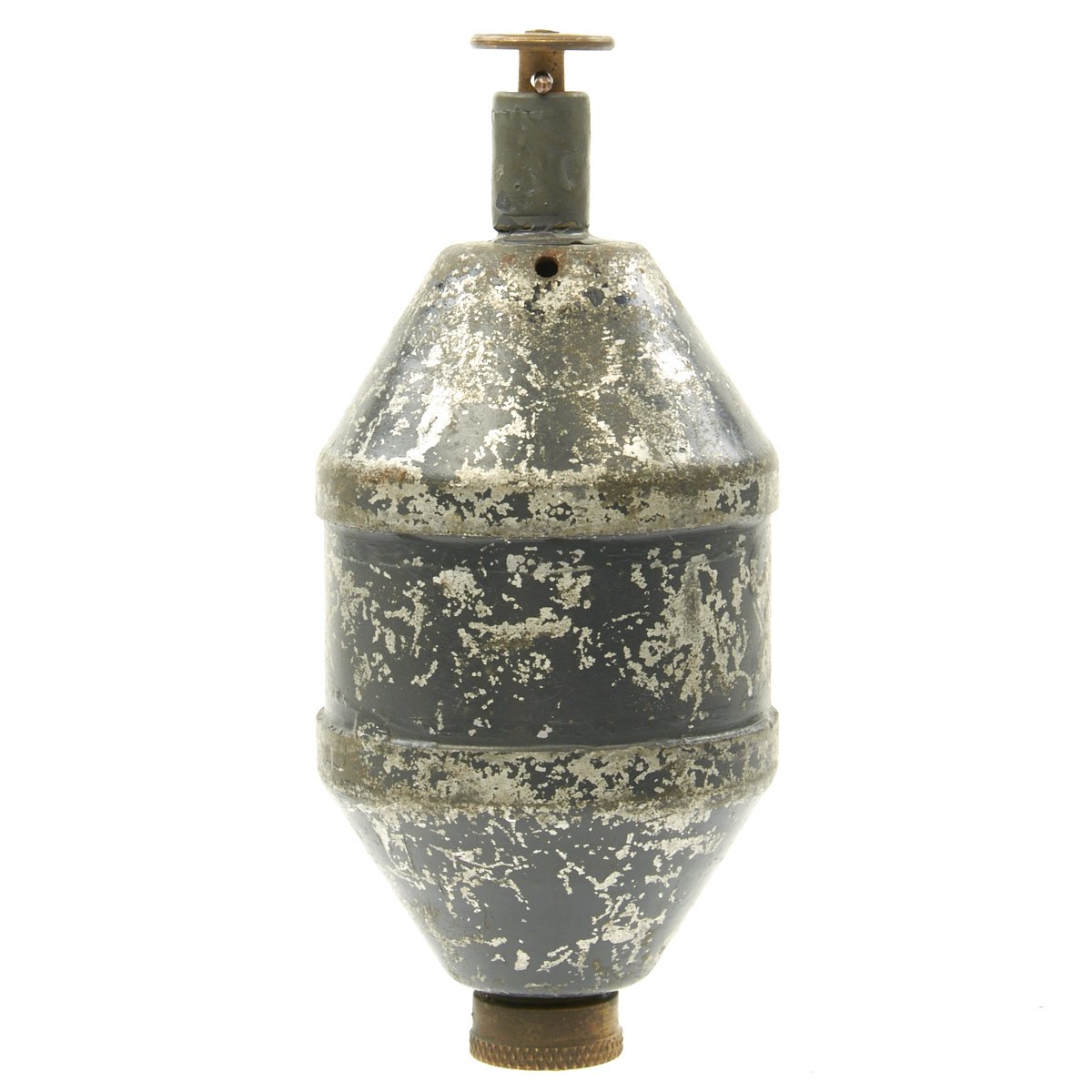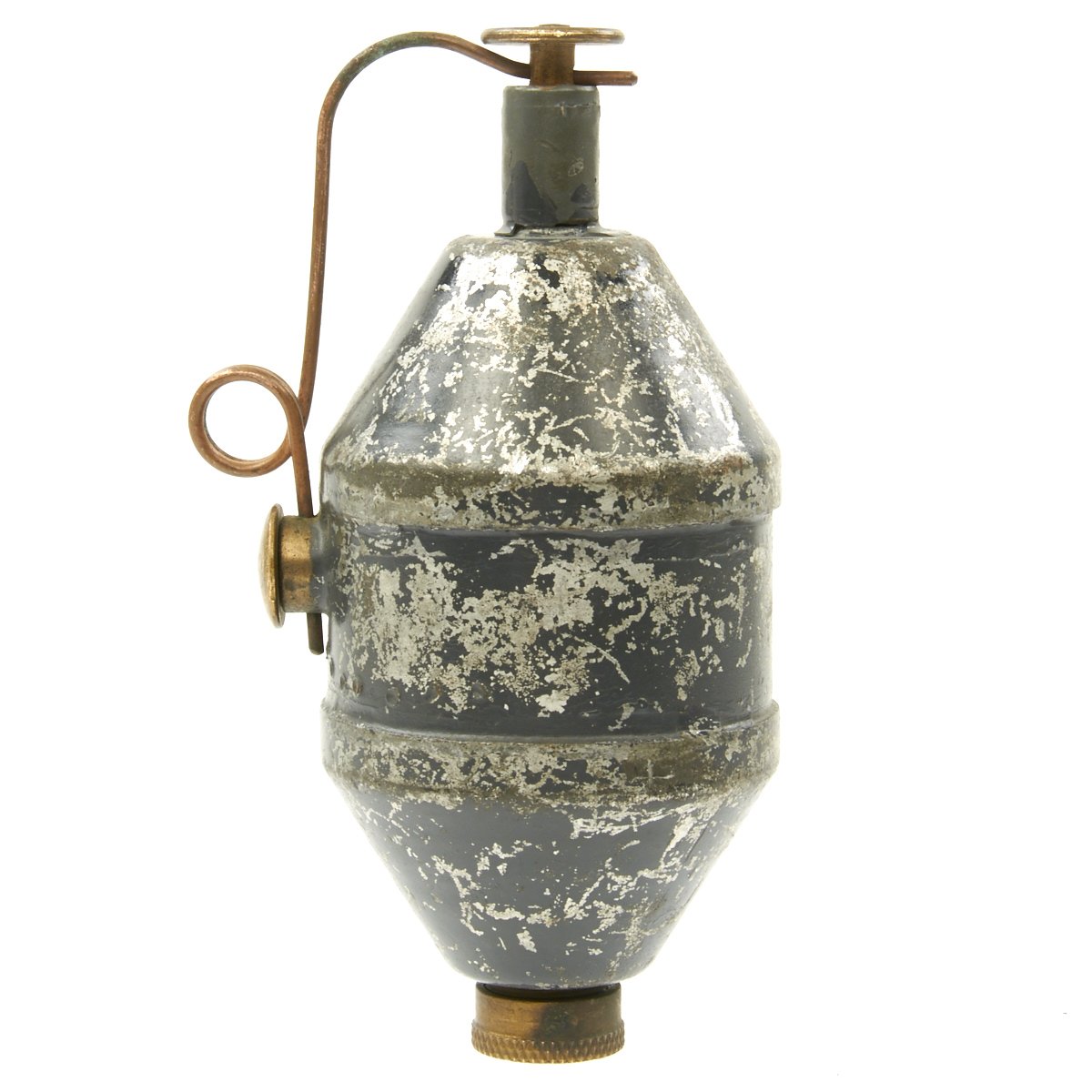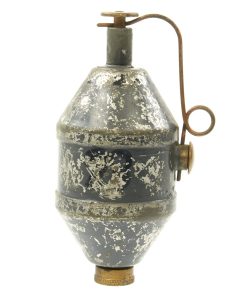Original German WWII Handgranate 343 d – Danish Model 1923 Training Grenade – Inert Original Items
$ 225,00 $ 90,00
Original Item: Only One Available. The Danish M.1923 grenade is one of the more mysterious types encountered by collectors. It seems everyone has a different opinion about what it is exactly. We’ve seen it described as Swedish, Japanese and almost everything in between. To put truth to the speculation – this model grenade was developed by the Danish and produced in Denmark, designated the Haandbombe Model 1923.
After the German occupation in April of 1940, ordnance plants continued production using the German nomenclature: Handgranate 342d (Offensive) and Handgranate 343d (Defensive).
Two color schemes are found: Yellow; and Grey with a Black Band. Yellow versions are less common than the Grey/Black style. Dated Yellow examples observed are from 1940 to 1945.
Markings vary considerably from: “23”; “K” inside a 12 pointed star; “AK/B 194x” (194x being the date); and “AMA” (AmMunitions Arsenalet).
Construction & Function
The body is sheet steel with a brass percussion delay fuse assembly and a safety wire. The top plunger is the striker mechanism, the bottom cap provides access to the detonator (or practice charge), and there is a fuse interrupter safety in the side which departs from the grenade after it is thrown, arming the grenade.
The defensive model is created by the addition of a fragmentation sleeve, consisting of two identical cast iron half shells attached to the offensive grenade and secured with wire wrapped around the top and bottom .
Identification
The practice grenade is made using thick-wall steel, to simulate live weight and make it more robust for repeated use.
The most obvious way to identify the practice from the service type (other than the color scheme) is the presence of two 2.5mm holes drilled in the body – one found just below the safety interrupter, the other is located on the top cone on the opposite side.
The base end cap has a 6mm exhaust hole for the practice charge, which was inserted in the space that would have held the detonator in a service grenade.
After use, the grenade had to be returned to the factory for a new fuse. A string of indented dots, may be found below the safety interrupter each indicating a re-load cycle by the factory. The example offered here was apparently reloaded TEN times. It still has a good deal of the original paint, and a great patina. It still has the 23 on the side visible, as well as the black band around the top.
Ready to add to your collection and display!
Fast Shipping with Professional Packaging
Thanks to our longstanding association with UPS FedEx DHL, and other major international carriers, we are able to provide a range of shipping options. Our warehouse staff is expertly trained and will wrap your products according to our exact and precise specifications. Prior to shipping, your goods will be thoroughly examined and securely secured. We ship to thousands clients each day across multiple countries. This shows how we're dedicated to be the largest retailer on the internet. Warehouses and distribution centres can be located throughout Europe as well as the USA.
Note: Orders with more than one item will be assigned a processing date depending on the item.
Before shipping before shipping, we'll conduct a thorough inspection of the items you have ordered. Today, the majority of orders will be delivered within 48 hours. The delivery time will be between 3-7 days.
Returns
The stock is dynamic and we cannot completely manage it because multiple stakeholders are involved, including our factory and warehouse. So the actual stock may alter at any time. It's possible that you may not receive your order once the order has been made.
Our policy is valid for a period of 30 days. If you don't receive the product within 30 days, we are not able to issue a refund or an exchange.
You can only return an item if it is unused and in the same state as the day you received it. You must have the item in its original packaging.
Related products
Uncategorized
Uncategorized
Uncategorized
Uncategorized
Uncategorized
Uncategorized
Band of Brothers ORIGINAL GERMAN WWII Le. F.H. 18 10.5cm ARTILLERY PIECE Original Items
Uncategorized
Uncategorized
Armored Burgonet Helmet & Polearm from Scottish Castle Leith Hall Circa 1700 Original Items
Uncategorized
Uncategorized
Uncategorized
Angolan Rebel 1970s era 60mm Inert Display Mortar from Angolan Civil War Original Items
Uncategorized
Uncategorized
Armoured Fighting Vehicles of the World: AFVs of World War One (Hardcover Book) New Made Items
Uncategorized
Uncategorized
Uncategorized
Uncategorized
